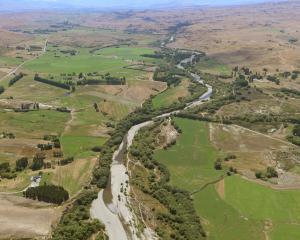Changes to the criteria for large dams is a "cunning piece of manipulation" that will leave regional councils with the liability if an exempt dam fails, Otago Regional Council chief executive Graeme Martin said.
The council has long been critical of the delays to the implementation of dam-safety regulations and a regulatory impact statement recently published by the Department of Building and Housing has it even more concerned.
"It smacks of everything wrong with leaky homes. It's the worst scenario come home to roost," Mr Martin said at a recent council meeting.
The paper assessed last year's review of the dam-safety regulations and had recommended to Government a preferred option of narrowing the range of large dams that were automatically classified to those over 8m high and 100,000cm in volume and providing regional authorities with "tightly limited" discretion to consider referring dams not classified.
This would reduce the number of dams captured by the scheme from 1150 to 712, about 55% fewer than recommended in the review. It was estimated 10% of high potential impact and 15% of medium potential impact dams would be excluded from the scheme by the higher threshold.
"This option provides the best balance between compliance costs versus risk management."
Concerns that regional authorities would consider themselves obliged to survey all dams to assess risk was mitigated by defining the "reasonable grounds" on which they could investigate dams in their region.
"Because the cost of the dam assessment falls on the regional authorities, this should provide an additional discipline on them to ensure they use their discretion in a balanced and moderate manner."
However, Mr Martin believed the proposed changes were "quite offensive" to regional councils.
"If we have responsibility relating to the safety of a dam, we have the liability as well."
He was deeply concerned it would increase the liability and costs faced by the councils and he would be taking the issue to a meeting of regional council chief executives, Mr Martin said.
It was a major issue, because if the regional council did not reassess a dam, and it failed, the liability would be on it. The council continued to believe that if the Government wanted to take this line, it would be better to take on the job and "leave us out", he said.
A Building and Housing spokeswoman said the proposed changes to the scheme would be included in Building Amendment Bill No 4, which was expected to have its first reading this year.
• Government legislation also required the council to review its policy on dangerous dams and adopt policies on earthquake and flood-prone dams. Otago Regional Council will hold a hearing on August 31 to consider the seven submissions it received on its proposed changes.












